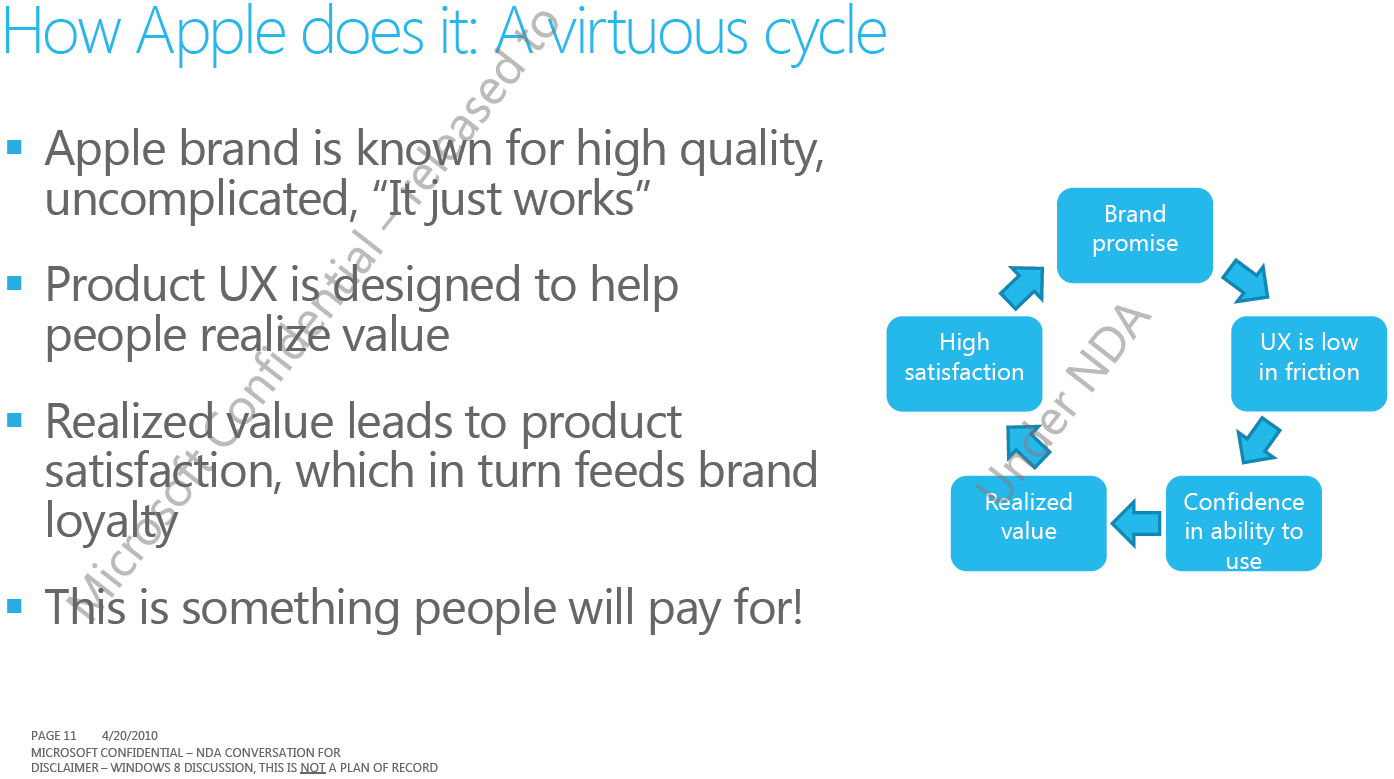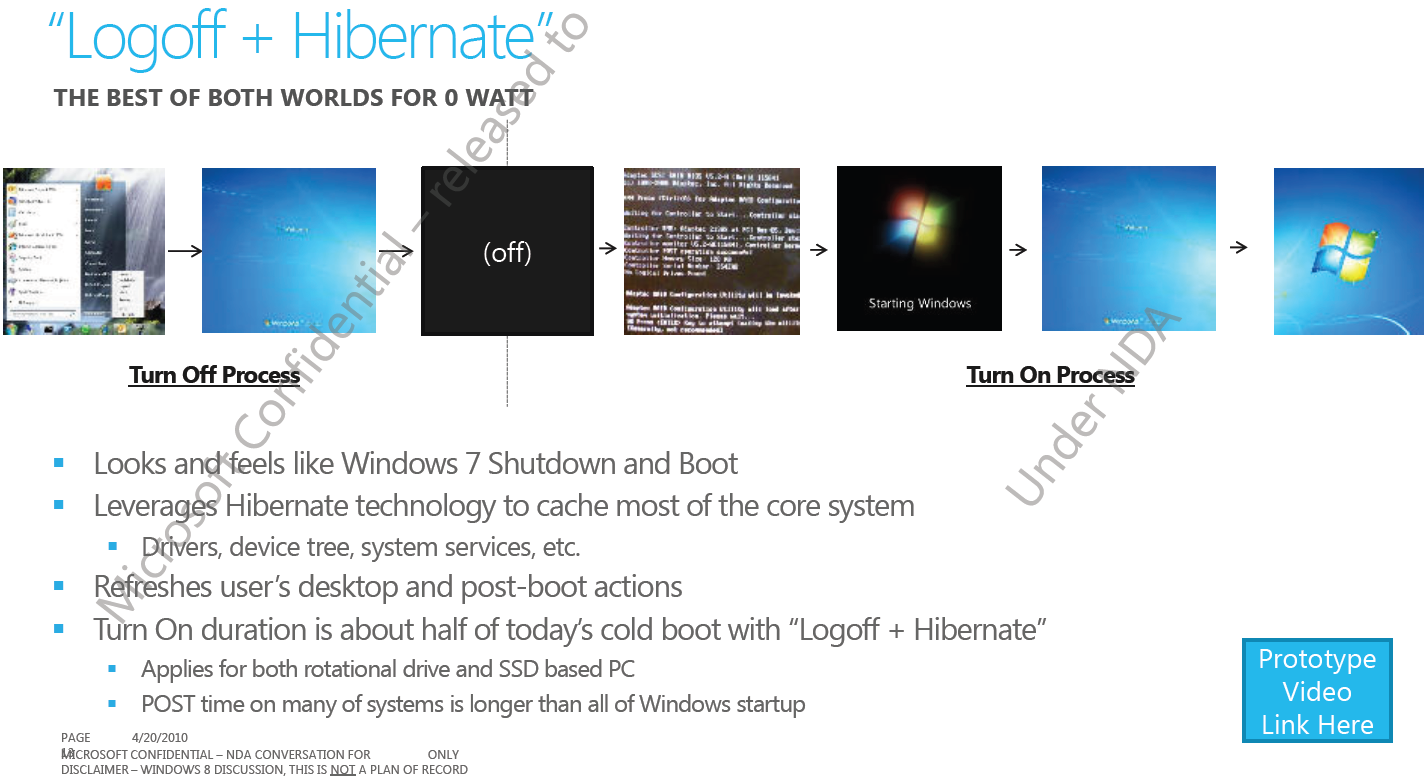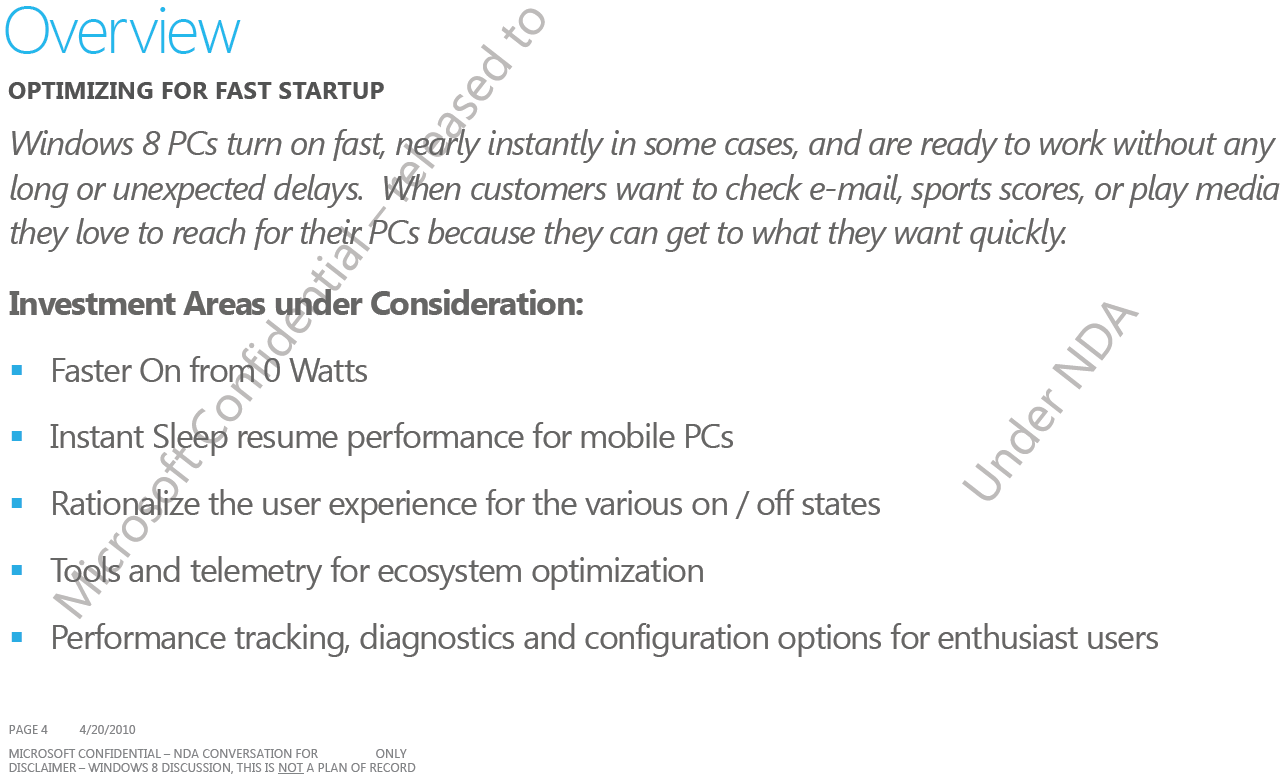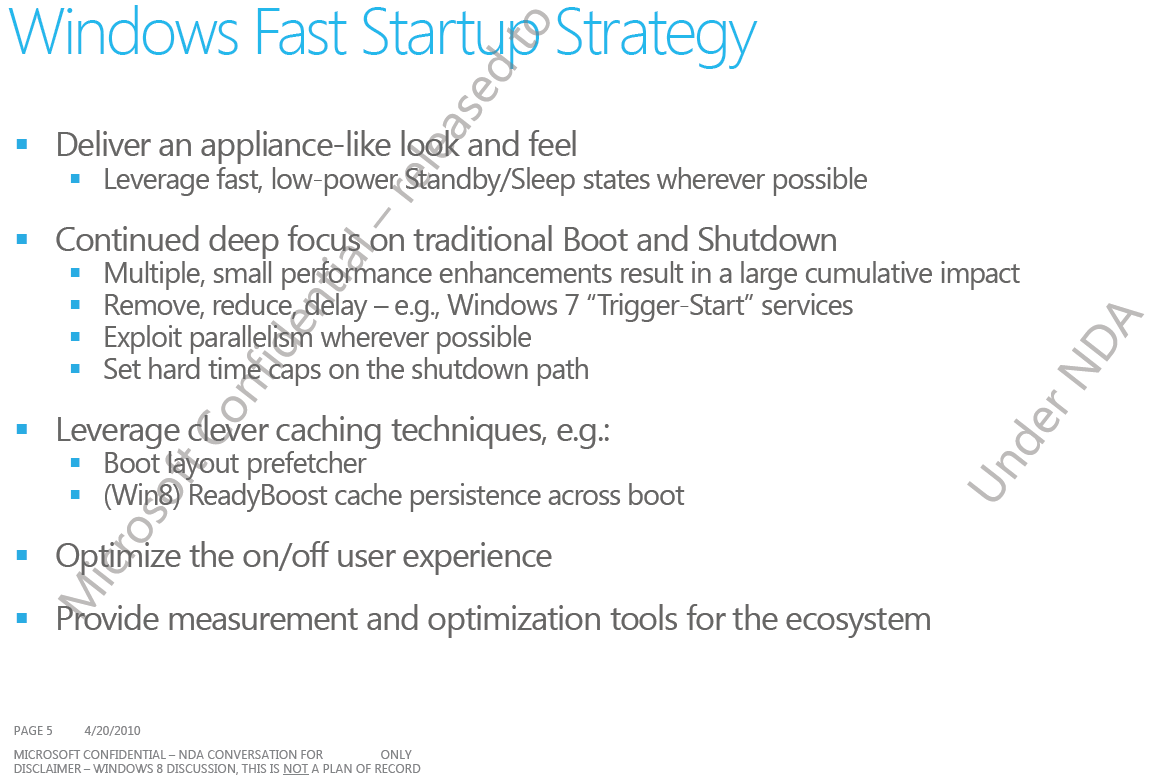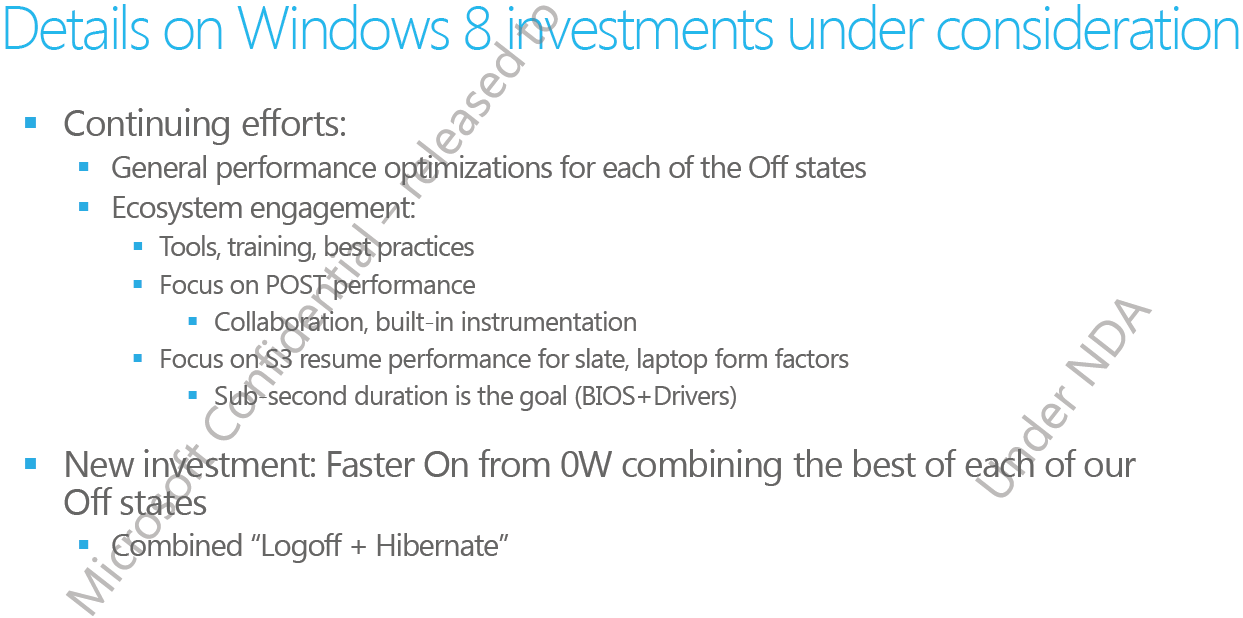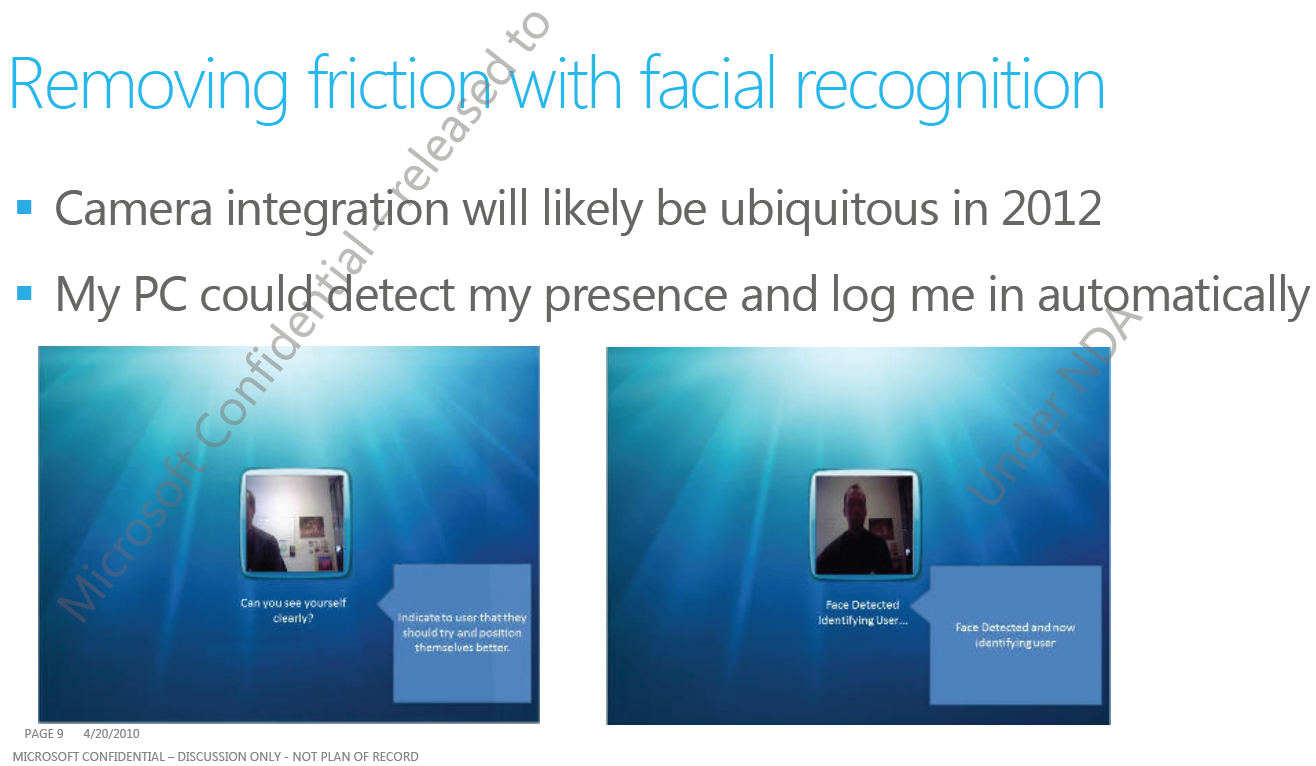Windows 8 to Focus on Faster Boot Times, Logins
Microsoft is looking to Apple for some inspiration on the user experience.
Windows 7 is the here and now, and we're liking it. If you ask Microsoft about what's next, it'll say that Windows 7 SP1 is will be the next step, it's happening later this year. But what we really want to know about is what the real next step is, and that's Windows 8.
Leaked onto the internet and now spread through many news sites is a presentation deck on Windows 8. Microsoft Kitchen successfully nabbed most of them and are now keeping them online for all to see. The information contained is mostly high-level and conceptual, likely dating back to even before Windows 7's retail release – but it's still very interesting to see what Microsoft's goals and inspirations are for Windows 8.
One that might irk the fanboy base is that Microsoft is taking a page from Apple in how the Mac maker is able to keep its customers so loyal and satisfied.
Another big goal for Windows 8 is instant-on, cutting down on the wait between powering on and the user being able to access the information or functionality that he or she is waiting for. This includes both faster boot times and faster resume from sleep.
One method to speed up boot time is to move from a traditional shutdown state to a logoff + hibernate. Microsoft wants this to feel like a regular shutdown, but it uses hibernation methods to cache most of the core system, such as drivers and system services. Microsoft estimates that this could cut boot times in half.
The login process will be simplified too, especially for those who aren't fond of using passwords to get into Windows. If there is a webcam present, the system will use that in conjunction with facial recognition software to log the user in without a password.
Another new development (which we assume won't be used in conjunction with the facial login) is user accounts being stored in the cloud. This could potentially mean that a user's bookmarks and Windows settings could be stored remotely at Microsoft and could be consistent even on other people's computers. Right now the data demands would be too high to have all user data stored in the cloud, but this could be the first step in Microsoft's desire to make Windows more user-centric and less machine-centric.
Get Tom's Hardware's best news and in-depth reviews, straight to your inbox.
-
do we really want our PC's to have an "appliance feel" though? Im all for faster boot up but not if it means I have to treat my PC like a toaster... one button to control them all.Reply
I also hope you can turn off the facial recognition stuff too... knowing microsoft they will cooperate with the government and datamine your facial details and if you download music or movies have you arrested anywhere in the world (and hey if you have an Iphone they'll know exactly where you are!) -
feeddagoat ASUS express gate is fantastic for quick boots from cold. Something like that where you can choose what to boot up first and get on with things while windows boots up everything else. Personally I don't like leaving my PC plugged in due to power surges in the area so never use standby. Already lost quite a few electronics to them.Reply -
jgutz2006 awestome! windows takes 3 seconds to boot, too bad the workstation BIOS that i have takes about 90 seconds to get to the point where windows can take over and whiz into action....Reply -
Looking forward to it. It seems like MS is finally getting it. To make the OS user-centric, because, after all, it's all about the experience.Reply
-
back_by_demand Only time will tell but I agree with one of the above statements that POST is longer than the Windows startup.Reply
On my system I press the power button and sit for an excruciating 30 seconds whilst the POST kicks in, then after the iceage comes and goes the Windows bootup is a speedy 10 seconds.
So, seeing as the POST is nothing to do with the version of Windows you have I have a 10 second boot, if they can halve that I will be a happy bunny. -
Drag0nR1der jgutz2006awestome! windows takes 3 seconds to boot, too bad the workstation BIOS that i have takes about 90 seconds to get to the point where windows can take over and whiz into action....Reply
My experience exactly... it's the bios slowing me down now. My laptop, with vista, boots up way faster, because it's bios is just a lot quicker to get to the windows boot, even though vista loads slightly slower than my win 7 on my main pc
